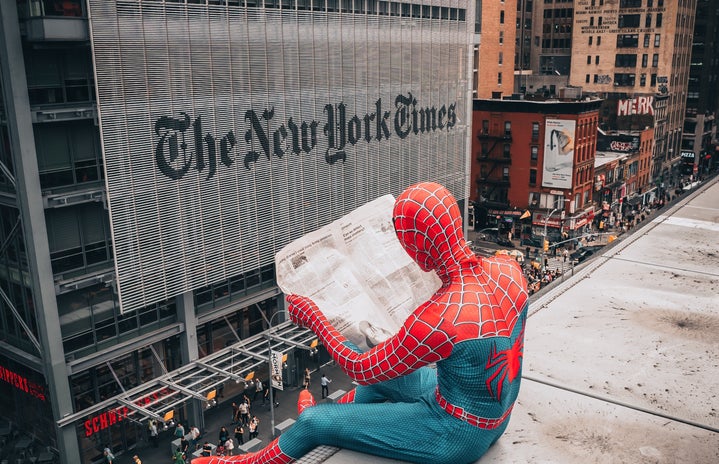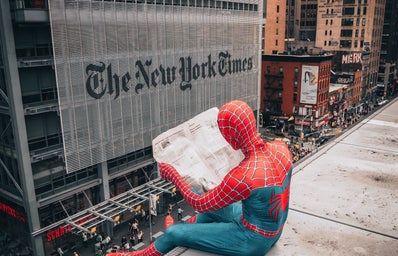There are many aspects of my upbringing that I feel grateful for, with access to a good education and a strong familial emphasis on knowledge at the top of the list. I recognize that this reality is becoming increasingly scarce for many in this country. Sometimes, I can’t help but feel frustrated at the seeming stupidity of many of my fellow Americans (a stance I hesitate to publicly claim). However, I know that education in the United States is extremely unequal and segregated, and an additional problem lies in access to information outside of the school setting. Some schools provide access to news sites like the New York Times or research databases like JSTOR. However, students are left on their own to access information for the most part, especially post secondary school. There are millions of adults in the United States who simply cannot access reliable news sites because of paywalls and are forced to go to websites with less than trustworthy reporting to obtain their information. It is clear that many Americans are either uninformed or misinformed, and this can at least be partially remedied through access to clear and reliable information.
For this article, I will embark on an experiment to test access to various news sites of different perspectives and sizes by learning the amount (if any) of free articles one is able to access and then the price of a subscription to the given site. Don’t fear! I will then provide a workaround for all of the annoying paywalls I encounter on my mission:
- The New York Times
-
My family has a subscription to the Times that I enjoy mooching off of. For this expercise, however, I logged out of my account and accessed the site as a guest. The first article I clicked on was blocked with a prompt to “create your free account or log in to continue reading,” which started this experiment on a great note. Their subscription options contain two plans— the “News” plan and the “All Access” plan— that cost four and six dollars a month, respectively. Though, the “News” subscription prohibits access to NYT games, cooking, sports and tech.
- Breitbart
-
I pretty much only look at this site when trying to make a point, which I guess applies here because I stopped counting when I was able to freely access ten articles of far-right propaganda. Breitbart writers publish some of the most heinous excuses for ‘news’ I’ve ever seen, and it is not shocking in the slightest that I did not have to pay or create an account to view their content. I was not able to find a subscription plan. With some of their “key influencers interviewed recently” page boasting Ron DeSantis and Liz Cheney, among others, it’s not hard to see that this is a respected publication among fascists. With 25 million monthly visitors to their site, it’s even easier to see that their platform has become a popular resource for Americans to access current events news.
- Yahoo! Finance
-
I hate a finance bro as much as the next girl, but my accounting professor said this was a reputable source, so I’m rolling with it. As soon as I entered the site, I was gifted a pop-up ad offering a 14-day free trial for Yahoo Finance Plus, which apparently gives the user “advanced tools and expert analysis so you can invest with confidence.” It’s a nice sentiment, but I was able to access every article I clicked on for free. The site posts content from other news sources, including but not limited to The Telegraph, Reuters and Bloomberg. I’m not totally sure why anyone would buy that plan, especially considering it is $29.16 PER MONTH. That’s highway robbery.
- BBC
-
BBC.com presented another case of easy-as-pie article access, and the pop up I saw upon visiting the site promised exclusive emails with no catch. I don’t believe there is any subscription here, and prior experience has found much of the information provided to be reliable and straightforward. I may have cheated a bit considering the BBC is British, but I digress because the site is still quite popular among Americans. I also wanted to include the BBC because their existence was created under a Royal Charter, and all UK households, companies and organizations who watch live television pay a licensing fee. The existence of a cohesive, accessible, reliable news source for the entire country is something we should mirror in the United States.
More sites ended up being accessible than I initially predicted, though it is often The NYT, The Washington Post and other more left-leaning news organizations that end up charging users to pay for content. This likely weakens the progressive base and makes it less relatable to many Americans, especially those with less education. In order to access sites with paywalls, I have reliably used archive.is and 12ft.io (which I procured from Reddit), and I have not had issues thus far with viewing a wide variety of sites.
We need to be making our truths just as easy to obtain and understand as our lies in order to prevent a society in which no one knows (or cares) what is true or not. Though this is an extreme, it is not that extreme given our current position as a country. While the U.S.’s bigoted population is influenced by the news they watch, many do not actually value the wellbeing of others and solely prioritize their prosperity. If we want to function effectively as a democracy, all Americans must be able to participate and they can only do so if they can access knowledge and information about the world around them.





